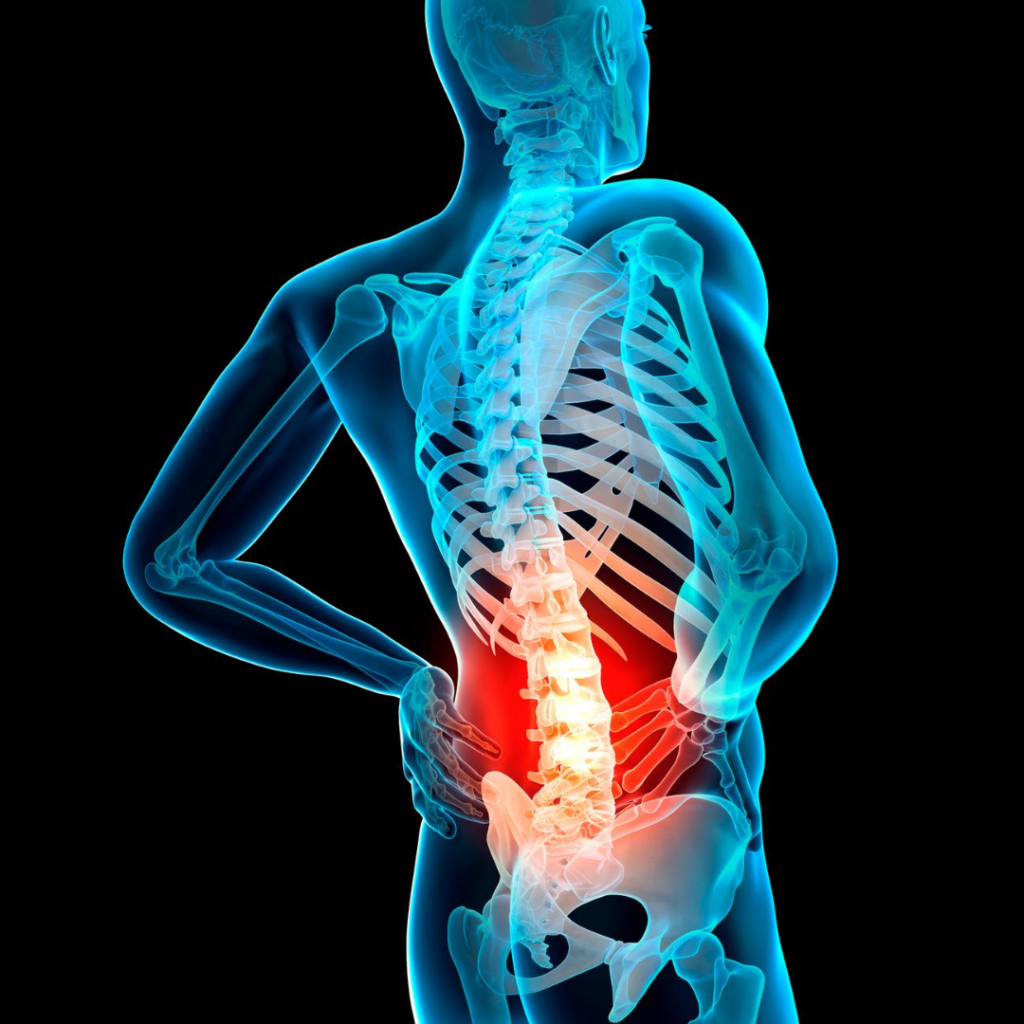Lumbar Disc Pain

Lumbar disc pain refers to discomfort originating from the discs in the lower back (lumbar spine). The lumbar spine consists of five vertebrae, and between each vertebra, there are intervertebral discs that act as cushions, absorbing shocks and allowing flexibility in the spine. When one of these discs is damaged, displaced, or degenerates, it can cause pain in the lower back, which may radiate to the legs, a condition often referred to as sciatica.
Causes of Lumbar Disc Pain:
- Herniated or Bulging Disc: A disc can bulge or rupture, causing the inner gel-like material to leak out and press on surrounding nerves. This can lead to pain, numbness, tingling, or weakness in the lower back, buttocks, and legs.
- Degenerative Disc Disease: As we age, the discs lose moisture and become less flexible, leading to wear and tear. This can result in pain and stiffness in the lumbar spine.
- Disc Prolapse: When a disc in the lower back slips out of its proper position, it can compress nerves, causing sharp pain and discomfort.
- Spinal Stenosis: Narrowing of the spinal canal can put pressure on the spinal cord or nerves, leading to pain in the lower back or legs.
Symptoms:
- Localized pain: A constant or intermittent ache in the lower back.
- Radiating pain: Pain that travels from the lower back down the legs (sciatica).
- Numbness or tingling: Sensory changes in the legs or feet.
- Weakness: Difficulty moving or controlling the muscles in the legs.
Treatment:
- Conservative treatments:
- Rest and posture correction: Avoiding activities that aggravate pain and ensuring good posture can help reduce discomfort.
- Physical therapy: Strengthening exercises for the back and core muscles can relieve pressure on the lumbar discs and improve flexibility.
- Pain management: Nonsteroidal anti-inflammatory drugs (NSAIDs) like ibuprofen or acetaminophen can help manage pain.

